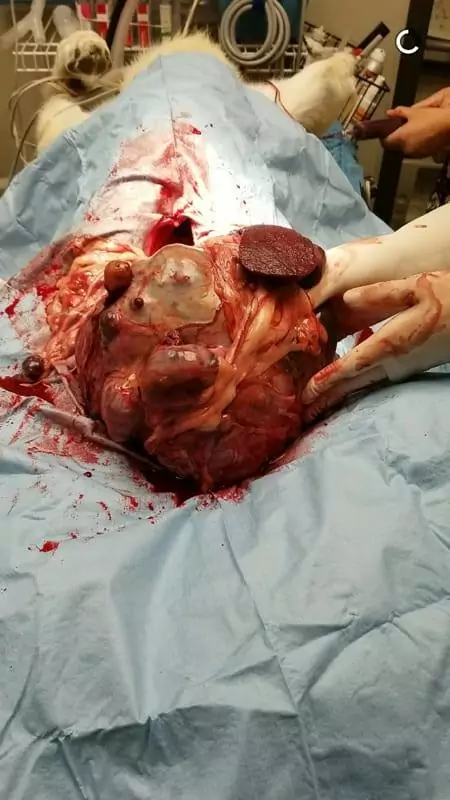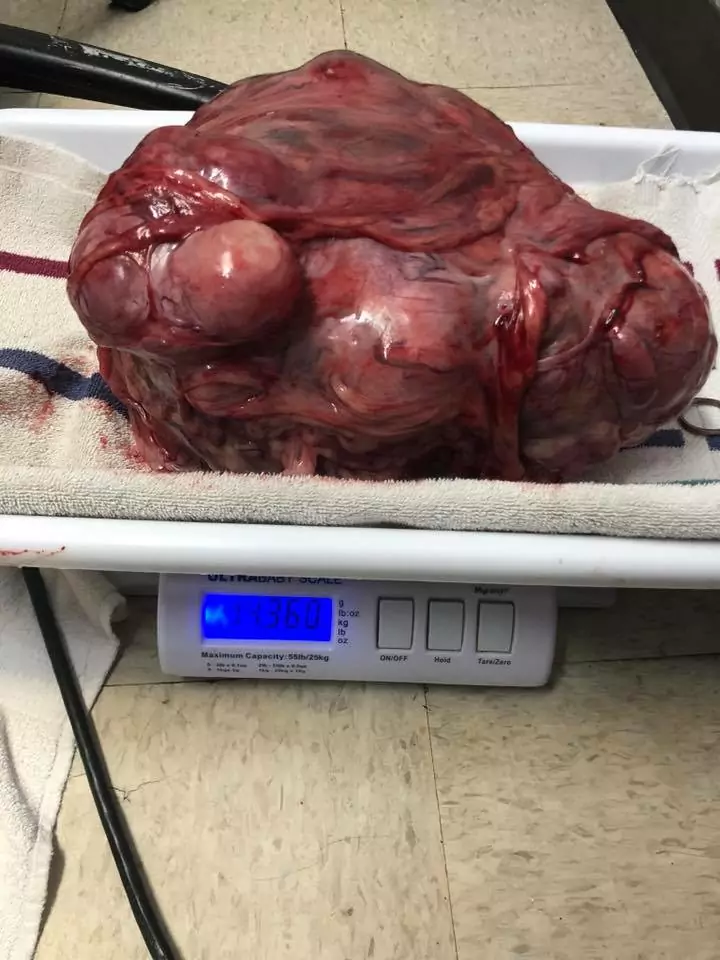There is always a deadly silence that hangs around any time neoplasia in dogs (cancer) is mentioned. It is like a forbidden word or a word of doom that needs not to be mentioned. Neoplasia in dogs also bears the same grave sentence.
Neoplasia has become a bad omen no one wants to associate themselves with. For some of us, it comes with bad memories – losing your hair, vomiting, chemo, death, etc.

Most of us have a lot of questions when it comes to neoplasia in dogs, and we are here to answer some of your questions.
The Definition of Neoplasia in Dogs
Neoplasia in dogs refers to the abnormal and uncontrolled growth of cells in any part of the body. The abnormal growth of cells or the mass is known as a neoplasm, while the process of abnormal growth is known as neoplasia.
Cells are living things, and like all living things, they grow and die. The cell grows by multiplying themselves. This multiplication is controlled by specific genes in the body. In neoplastic situations, the gene is malfunctioning and keeps multiplying cells. In other words, it doesn’t know when to stop.
Neoplasia and cancer are often used interchangeably. Cancers usually refer to malignant/deadly neoplasm, while neoplasia refers to any kind of abnormal growth.
The tendency of a dog to get neoplasia often increases with age, just like humans. Most dogs are diagnosed with cancer after they are ten years old. Smaller breeds of dogs tend to age slowly and live longer than large breed dogs.
It has been known for a long time that one dog year is equal to seven human years, it is not entirely true. Current research shows that the first year of a dog is equivalent to fifteen human years. The second year is equal to nine human years. And from the third year, every human year is equal to five dog years.
Tell-tale Signs of Neoplasia in Dogs
- One of the common misconceptions about neoplasia is that it can’t be treated. But cancer can be treated depending on its location and severity. Various veterinarians specialize in veterinary oncology (a branch of veterinary medicine that studies cancer and its treatment).
- People are often concerned about chemotherapy treatment in their dogs, but dogs can tolerate chemotherapy much better than humans. Usually, chemotherapy in dogs is given in low doses, so the various side effects that are seen in humans, such as hair loss, vomiting, etc., are minimized or not seen altogether.
- Also, it is not only with chemotherapy that neoplasia can be treated. Other treatment options include surgery, immunotherapy, radiation therapy, amongst others.
- It is also believed that euthanasia (mercy killing) is the only solution for a dog with neoplasia. This is not the case, pet owners can request euthanasia if they want to, but a dog with neoplasia can live a long, happy life on chemotherapy or after treatment.
- Neoplasia in dogs cannot be spread to their human owners. Offsprings of dogs with neoplasia are often at risk of getting one in their lifespan, even though this is not entirely true.
- It is often believed that you can tell the type of neoplasm by looking at its appearance. This is not true, and only with various diagnostic tests and biopsies can particular neoplasia be known.
- Most people tend to believe that only older dogs can get neoplasms. This is not entirely true. Neoplasia is common in older dogs because they have lived for a long time, and some of their genes might have mutated along the way, but some younger dogs also come down with neoplasia.
- Also, people believe that their dog is too old to receive treatment. Even though neoplasia occurs most commonly in older dogs, this doesn’t mean they are old to receive treatment. Neoplasia treatments are not harsh in dogs, and unless the dog is not generally healthy, it is okay to go ahead with the treatment.
- It is also believed that you should treat your dog differently when it has neoplasia. The only difference is that your pet would feel more tired, but nothing else changes. Your pet would be able to play and be itself.
- Surgery and biopsies do not increase the spread of cancer. They rather control its spread and help the veterinarian know what type of cancer they are dealing with.
What Are The Two Types of Cancer in Dogs?
Neoplasia can be described in two broad types – benign or malignant.
A benign neoplasm means it grows slowly. It does not invade other tissues and does not spread to other parts of the body. Benign neoplasm has a good prognosis (outcome). Usually, it does not kill the dog unless it is located in a vital part of the body, restricts blood flow, or grows around a nerve.
Benign neoplasm does not recur after being removed either surgically or through drugs and chemotherapy. Even if they do reoccur, it is usually in the same place.
Benign neoplasms usually have an even shape with distinct borders, and they may or may not require treatment due to their location. Usually, benign neoplasms are movable when they are being touched. Meaning they are demarcated from other normal tissues in the body.
Benign neoplasia often carries the suffix -oma to the cell of origin. The exceptions, in this case, are hepatoma, lymphoma, melanoma, seminoma. In summary, benign neoplasia is a non-aggressive kind of neoplasia, and they rarely become malignant even though there are possibilities.
A malignant neoplasm means it grows rapidly and very fast. It tends to invade other surrounding tissues and spreads to other parts of the body (metastasis). Malignant neoplasm usually has a bad prognosis, and usually, the dog dies.

With malignant neoplasia, the primary neoplasm is the original location of the neoplasm, and the secondary neoplasm is where the spreading has occurred. The most affected secondary organs in malignant neoplasia are the liver and the lungs.
Malignant neoplasm tends to recur after they have been removed either surgically or through drugs and chemotherapy. Most malignant neoplasms have an uneven shape, no distinct borders, and they all require treatments. In addition, they are often not movable when they are touched. This means malignant neoplasm is not easily demarcated from other normal tissues of the body.
Malignant neoplasia often carries the suffix -sarcoma if it is from mesenchymal or connective tissue and the suffix -carcinoma from epithelial tissue. In summary, the malignant neoplasm is said to be an aggressive kind of neoplasia and is often called cancer.
Where Can Neoplasia on my Dog Appear?
Neoplasia can occur in any organ or tissue in the body. Most neoplasia’s signs and symptoms resemble other diseases, and it is appropriate to check up with your vet.
The most common kind of neoplasia in dogs occur in the following organs:
- Lymph nodes – lymphoma
- Hemangiosarcoma – spleen
- Mast cell tumor – skin
- Osteosarcoma – bones
- Melanoma – skin, mouth, and toenails
- Mammary tumor – mammary gland
The most common signs and symptoms of neoplasia include:
- Non-healing wounds
- Bumps and lumps on the body
- Difficulty breathing
- Diarrhea
- Vomiting
- Loss of appetite
- Bleeding
- Abdominal swelling
- Odor
What Can I Do to Prevent Neoplasia in my Dog?
The cause of most neoplasia is unknown. Therefore, there is no sure way of preventing neoplasia in your dog. However, genetics might play a role in how risky your dog is likely to get cancer.
Other suggested theories include the frequency of inhaling cigarette smoke from the smoker and the end of the cigarette. Avoid taking your dog to places where there are known environmental toxins.
Dogs should not be overfed as obesity can contribute to the formation of neoplasia. Conversely, a dog with a healthy weight has low risks of acquiring neoplasia. Avoid excessive exposure of your dog to the sun also.
You should ensure your dog eats well, has enough exercise and rest, and always go for their yearly or monthly checkups.
How Does a Vet Diagnose Cancer in Dogs?
A vet would diagnose cancer in your dog based on the medical history and physical examination. They would also take additional imaging tests such as radiography, ultrasound, computed tomography (CT scan), or magnetic resonance imaging (MRI) to confirm or rule out certain diseases. Also, blood and urine tests would be done to assess the health of the organs.
The most common and accurate way of diagnosing cancer is to take a biopsy (sample) of the tumor or affected part for cytology (study of the cells under a microscope). This indicates the type of cells present and how fast they are dividing.
The vet would also take samples from various lymph nodes in the body to check whether the neoplasia is benign or malignant.
Conclusion
With the increase in advanced diagnostic measures, specialization, and scientific knowledge, neoplasm in dogs is not as scary as it used to be. Having neoplasia is not a death sentence for your dog. However, dogs with neoplasia can live a happy, long life surrounded by the love of their family.
If you are not sure of anything, kindly confirm with your veterinarian.
